RIKEN, NTT, and Amplify Inc. Introduce General-Purpose Optical Quantum Computer
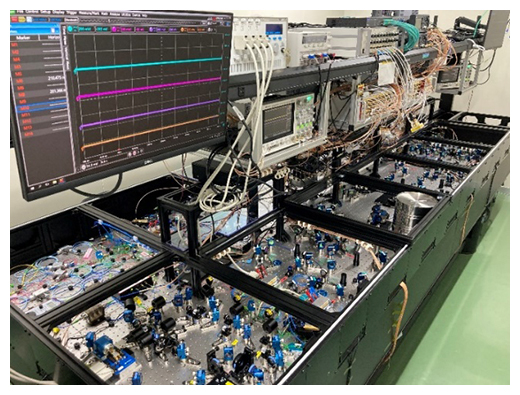
Insider Brief:
- A collaboration between RIKEN, NTT, and Amplify Inc. has developed the world’s first general-purpose optical quantum computer, which is accessible through the cloud system and is designed to advance large-scale quantum calculations.
- The optical quantum computer operates at nearly room temperature, benefits from high-speed processing up to several hundred terahertz, and uses optical multiplexing for compact, large-scale calculations with high compatibility for networked quantum systems.
- The device uses a continuous-variable analog design with time-division multiplexing, where computations occur through quantum teleportation on time-multiplexed quantum entanglement for efficient multi-step quantum operations.
- Editor’s Note: This post has been translated to English from Japanese using Google Translate, as it originally appears here.
- Image Credit: Photonic Quantum Computer by RIKEN
PRESS RELEASE — A joint research group including Akira Furusawa, team leader of the Optical Quantum Computing Research Team at the RIKEN Quantum Computing Center (Vice Director of the Quantum Computing Center and Professor at the Graduate School of Engineering, The University of Tokyo), Hidehiro Yonezawa, team leader of the Optical Quantum Control Research Team, Nippon Telegraph and Telephone Corporation (NTT), and Takuji Hiraoka, CEO of Fixstars Amplify Inc., has succeeded in developing a new type of quantum computer. This will be the world’s first platform for general-purpose optical quantum computing.
Quantum computers are expected to solve various problems at ultra-high speeds by using the principles of quantum mechanics for calculations, and there is a fierce competition to develop them around the world. The RIKEN Quantum Computing Research Center also unveiled a superconducting quantum computer in 2023.
This time, the joint research group developed a new quantum computer using an optical method. The optical method is expected to enable faster and larger-scale quantum calculations than conventional quantum computers, and will advance quantum computer research to a new stage, including solving previously difficult computational problems.
The newly developed optical quantum computer can be accessed through a cloud system via the internet. For the time being, it will be available through a joint research agreement, but in the future, it is expected to contribute to expanding the use of quantum computing platforms in Japan, creating use cases for quantum computers, and contributing to the development of the domestic quantum industry and improving its international competitiveness.
Background
Quantum computers are expected to be a revolutionary new technology. Based on the principles of quantum mechanics, a completely new type of computer can be realized by cleverly manipulating the characteristics of the quantum world, such as quantum entanglement and quantum superposition. The concept of quantum computers was proposed in the 1980s, and attracted attention in the 1990s when algorithms specific to quantum computers were discovered. Since the 2000s, basic and applied research has been conducted around the world to realize quantum computers. In recent years, small-scale quantum computers have been realized and are now available on a cloud-based basis, and the RIKEN Quantum Computer Research Center has developed a 64-qubit superconducting quantum computer and made it available on the cloud in 2023.
There are many candidates for the method of realizing quantum computers, including superconductivity, neutral atoms, ions, silicon, light, etc., and the competition is fierce. Among these, optical quantum computers are considered to be one of the most promising candidates for the following reasons:
- In principle, it is possible to increase the clock frequency (operating frequency) of calculations up to the optical frequency of several hundred terahertz (THz, 1 THz is 1 trillion hertz).
- Unlike other types, it can operate at almost room temperature.
- Optical multiplexing technology enables large-scale calculations in a compact setup
- It has high compatibility with optical communications, making it easy to build a quantum computer network.
In particular, the ultrafast optical technology developed in optical communications is an extremely useful asset (resource) for optical quantum computers and will provide a major advantage.
Team Leader Furusawa has been a leader in optical quantum computer research for over 20 years, and the various technologies he developed at RIKEN and the University of Tokyo during that time have culminated in this optical quantum computer. The core ultra-broadband quantum light generation device was provided by a quantum light source developed based on the ultra-high-speed communication optical device that has long been researched by NTT Advanced Device Technology Laboratories, and the cloud system was developed with the cooperation of Fixstars Amplify Co., Ltd.
Research Methods and Results
The optical quantum computer developed this time is an analog-type quantum computer of the measurement-induced type that uses a time-division multiplexing technique. Here, an analog-type quantum computer refers to a continuous-quantum (analog) quantum computer based on quanta expressed as continuous quantities rather than bits . Specifically, the amplitude value of light waves serves as the carrier (transmission medium) of information. By combining this with the time-division multiplexing and measurement-induced type techniques, a large-scale and efficient quantum computer can be realized.
In a measurement-induced quantum computer, calculations are performed by repeated quantum teleportation. This was demonstrated by a group led by Team Leader Furusawa in 2013. Quantum teleportation is a method for transferring quantum information to a remote location via quantum correlations called quantum entanglement, and was experimentally demonstrated for the first time in the world without any conditions by Team Leader Furusawa in 1998. A conceptual diagram of this quantum teleportation is shown in Figure 1. When considered as a quantum operation, quantum teleportation is merely an identity operation in which one quantum state is input and output as is, but by making changes to the measurement part (changing the measurement basis), various quantum operations other than the identity operation can be realized. In the measurement-induced method, a large-scale quantum entanglement is first generated, and then quantum teleportation is repeatedly performed on it via measurement, realizing multi-step quantum operations.
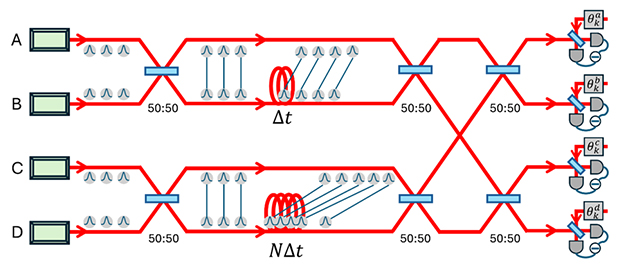
Fig. 2. Schematic diagram of the optical quantum computer device
A, B, C, and D represent optical parametric amplifiers. Light with quantum fluctuations squeezed out (squeezed light) is emitted from this device. This is divided by time Δt and treated as an optical pulse. When two optical pulses are superimposed by a 50% reflective beam splitter (blue rectangle), two-way quantum entanglement is generated between A and B and between C and D, respectively. After that, the optical path B is delayed by one optical pulse ( Δt ), and the optical path D is delayed by N optical pulses ( NΔt ). As a result, the two-way quantum entanglement is distributed at different times. This is superimposed by multiple 50% reflective beam splitters and then measured, and a teleportation-based quantum operation is performed. Depending on the quantum operation, the measurement basis ( θ a k , θ b k , θ c k , θ d k ) is changed for each optical pulse (k is the pulse number).
Since the optical delay is N pulses, the macronode has a periodic structure of N. Therefore, when rearranged, the quantum entanglement takes on a structure that spreads like a lattice in time, as shown in Figure 3 (a). This lattice-like spread of quantum entanglement becomes the computational resource of an optical quantum computer. In particular, since the size of this quantum entanglement is determined by N, which is determined by the optical delay path, and the elapsed time, an unlimited number of quantum resources can be used by increasing the time.
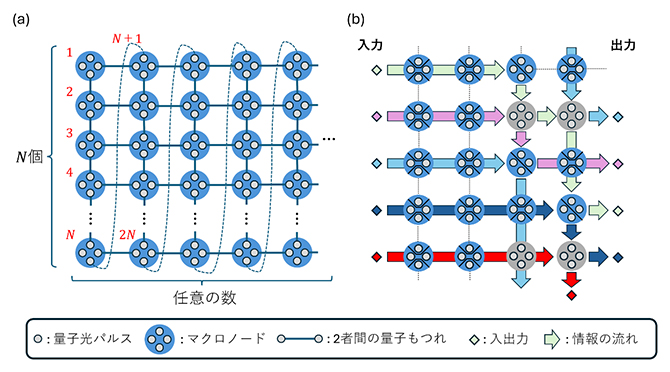
Figure 3. Quantum entanglement multiplexed in the time domain and quantum computing using it
- (a)By rearranging the macro nodes, we can see that quantum entanglement is spread out in a lattice-like manner (multiplexed) over time. This is the computational resource of a quantum computer. The size of quantum entanglement, i.e., the computational resource, increases with time.
- (b)By performing teleportation-based quantum operations on each macro node, multi-step quantum operations are executed for multiple inputs.
The actual calculation is performed by performing nonlocal measurements (superposition and measurement by multiple 50% reflection beam splitters) on the four optical pulses that form the macronode, and then performing teleportation-based calculations (Fig. 2). By performing teleportation-based quantum operations on each macronode, multi-step quantum operations are performed on multiple inputs (Fig. 3 (b)). This optical quantum computer is capable of linear calculations with an arbitrary number of steps for approximately 100 continuous quantity inputs.
The left side of Figure 4 shows the core optical parametric amplifier fabricated by NTT Advanced Device Laboratory. It is a periodically poled lithium niobate waveguide, and combines an extremely wide bandwidth (about 6 THz) with a high squeezing level (up to about 8 decibels (dB)). The pulse width of the light is set to 10 nanoseconds (1 nanosecond is 1 billionth of a second) in time and 3 m in space, which corresponds to a clock frequency of 100 megahertz (MHz, 1 MHz is 1 million hertz). This pulse width is determined by the bandwidth of the current optical measuring instrument and the electronic devices connected to it.
The right side of Figure 4 shows a programmable logic device that controls the optical measurement device and collects the measured data . This device generates electrical pulses with a period of 100 MHz to manipulate the optical measurement basis at high speed, thereby performing the specified quantum operation on each macro node.
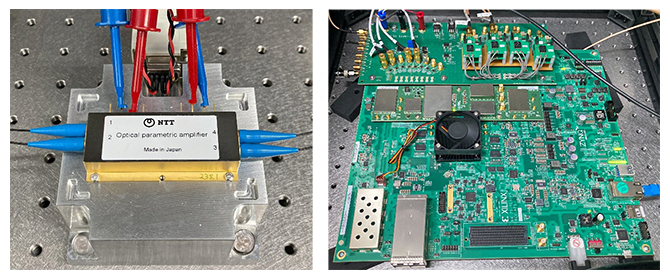
Fig. 4 Optical parametric amplifier and programmable logic device
- (left)An optical parametric amplifier manufactured by NTT Advanced Device Laboratories.
- (right)A programmable logic device that controls the light measuring instrument and collects measurement data.
This photonic quantum computer is a cloud-based quantum computer, and as shown in Figure 5, the actual photonic quantum computer at RIKEN is connected to the cloud. Users design quantum circuits and send them to the cloud. The quantum circuits are converted into actual machine parameters on the cloud and sent to the actual photonic quantum computer. Users receive the execution results via the cloud.
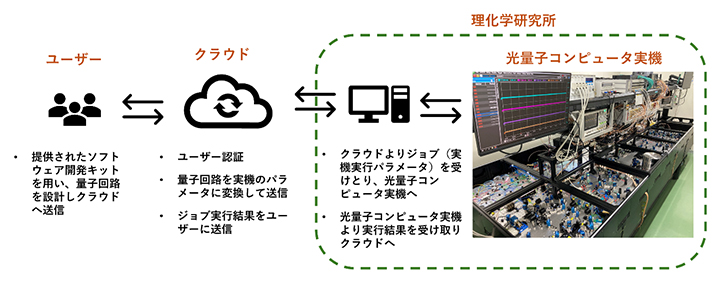
Figure 5. Cloud system configuration
Users design quantum circuits and send them to the cloud. The quantum circuits are converted into real machine parameters in the cloud and sent to a real optical quantum computer to execute quantum operations. The users receive the results of the operations via the cloud.
This optical quantum computer is capable of linear transformation of continuous variables, which makes it possible to apply it to continuous optimization problems, and by introducing nonlinear transformation functions, it is expected to be applicable to neural networks, etc.
Future Expectations
We have now realized an optical quantum computer and its cloud system. This is expected to greatly advance the development of optical quantum computers and the exploration of use cases in finance, medicine, materials science, machine learning, optimization problems, and more.
In the future, in order to make photonic quantum computers truly practical, we plan to solve issues such as increasing the number of inputs, increasing speed, introducing nonlinear operations, and exploring applications. In the future, we will also explore the realization of a large-scale, error-tolerant, general-purpose quantum computer.
Research Support
This research was conducted with support from the Japan Science and Technology Agency (JST) Moonshot Research and Development Program Moonshot Goal 6: “Realize a fault-tolerant universal quantum computer that will dramatically advance the economy, industry, and security by 2050 (Program Director: Kitagawa Masahiro).” The research project is titled “Research and Development of a Fault-tolerant Large-scale Universal Optical Quantum Computer (Project Manager: Furusawa Akira).”
